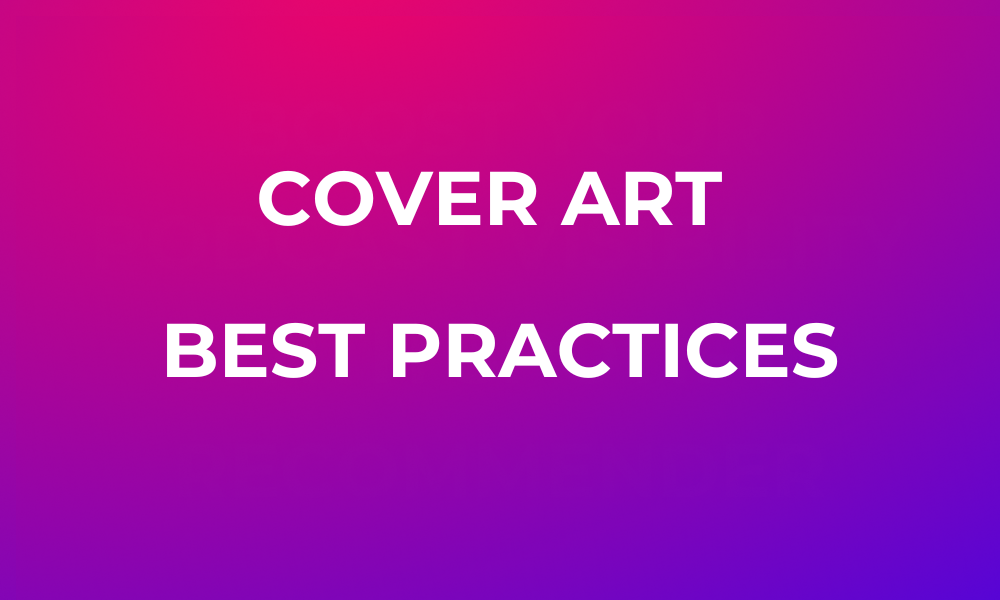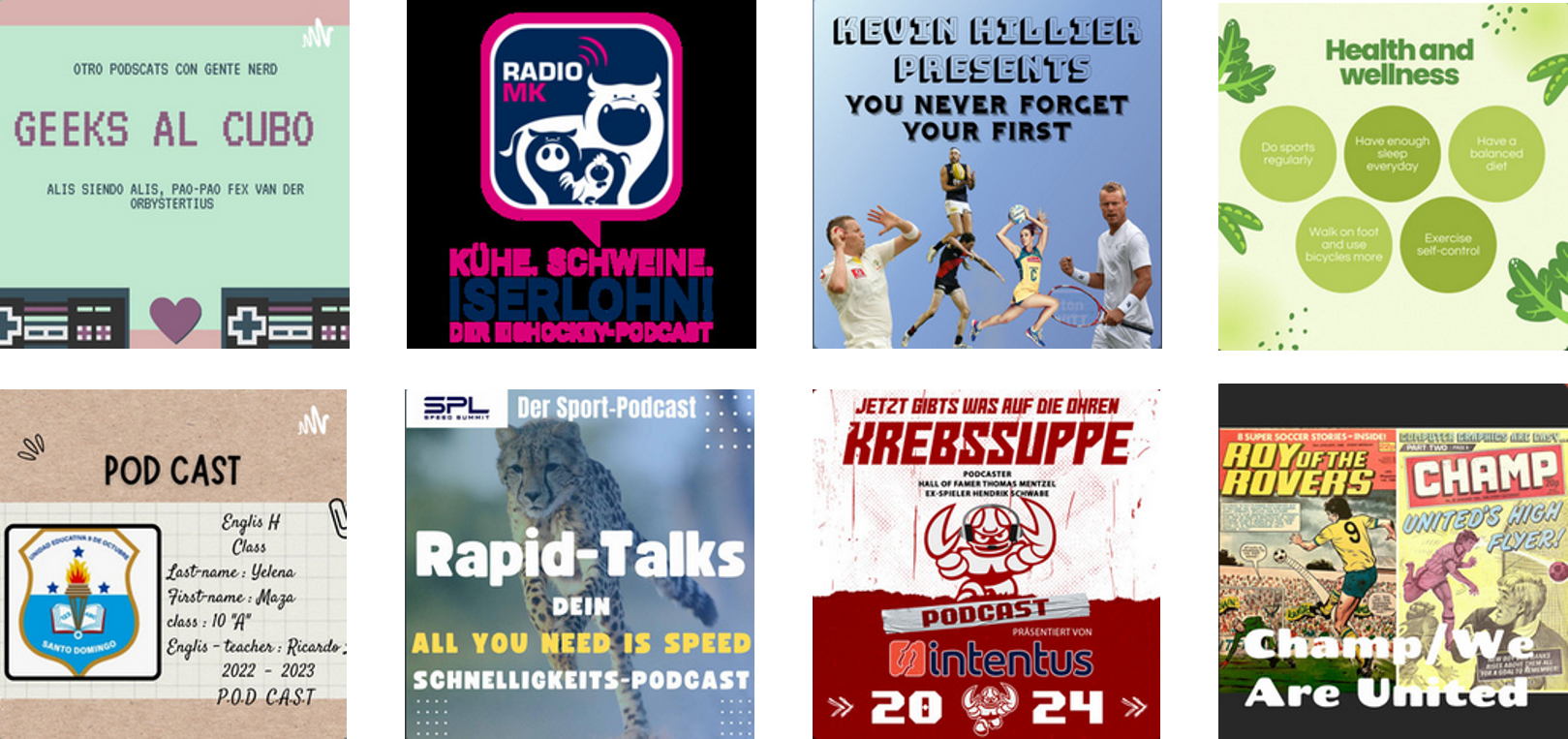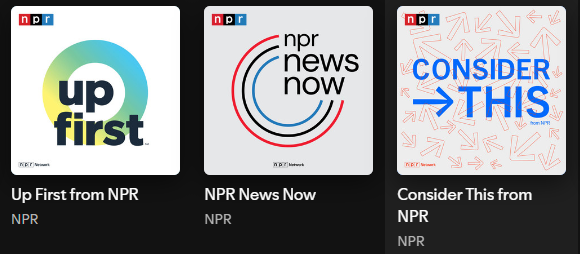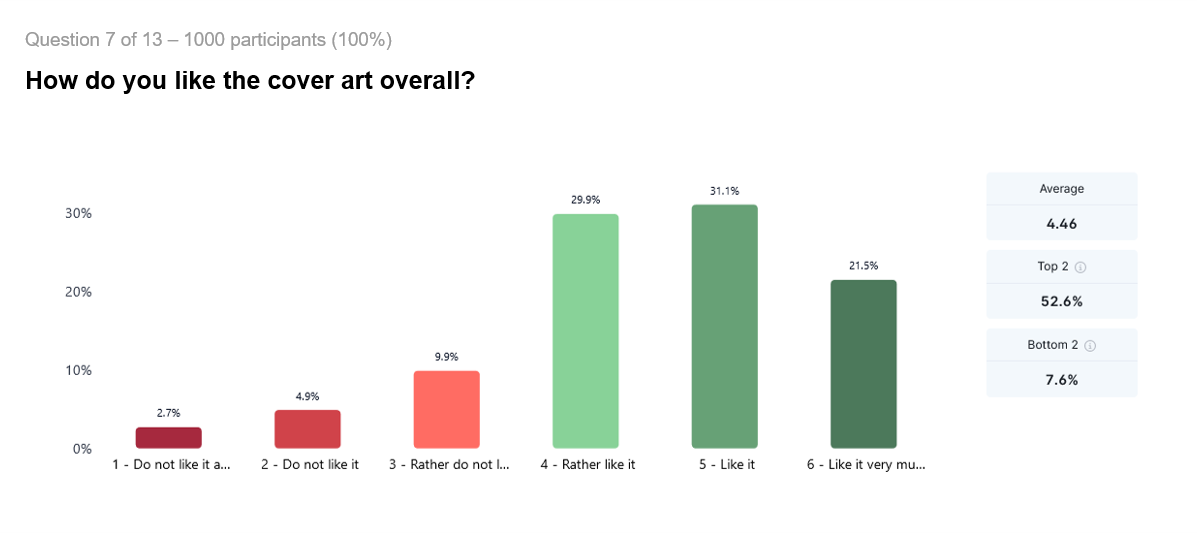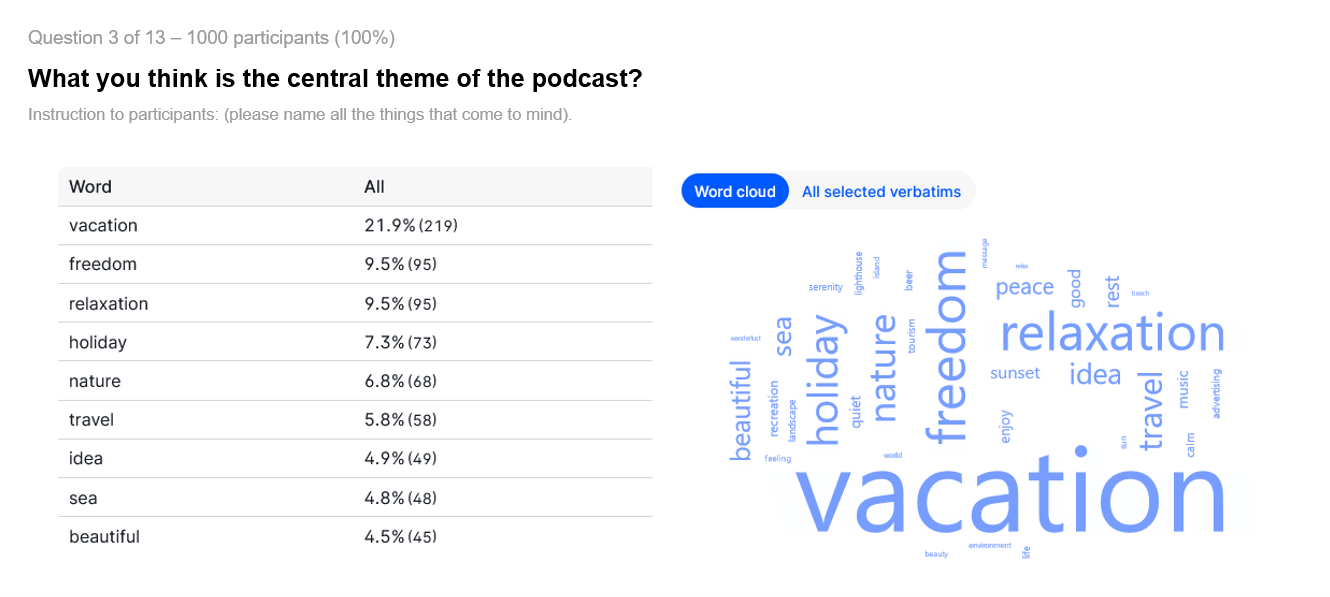
Podcast Visibility Optimization (PVO) helps increase your podcast’s reach by improving its position in search results on listening platforms like Spotify or Apple Podcasts. This article will walk you through simple steps to measure the impact of PVO on impressions and downloads so you can track your progress and calculate its ROI effectively.
What is Podcast Visibility Optimization?
Podcast Visibility Optimization (PVO) focuses on boosting your podcast’s visibility across major audio platforms like Spotify, Amazon Music, Apple Podcasts, and Deezer. The goal? To get your podcast in front of more listeners by appearing at the top of relevant search queries.
How much of your audience is driven by search vs. – other activities such as social media or PR could easily be estimated by looking at your Spotify dashboard. In the example below, Search represents 30% of Impressions, a benchmark that most of our clients’ shows tend to exceed.
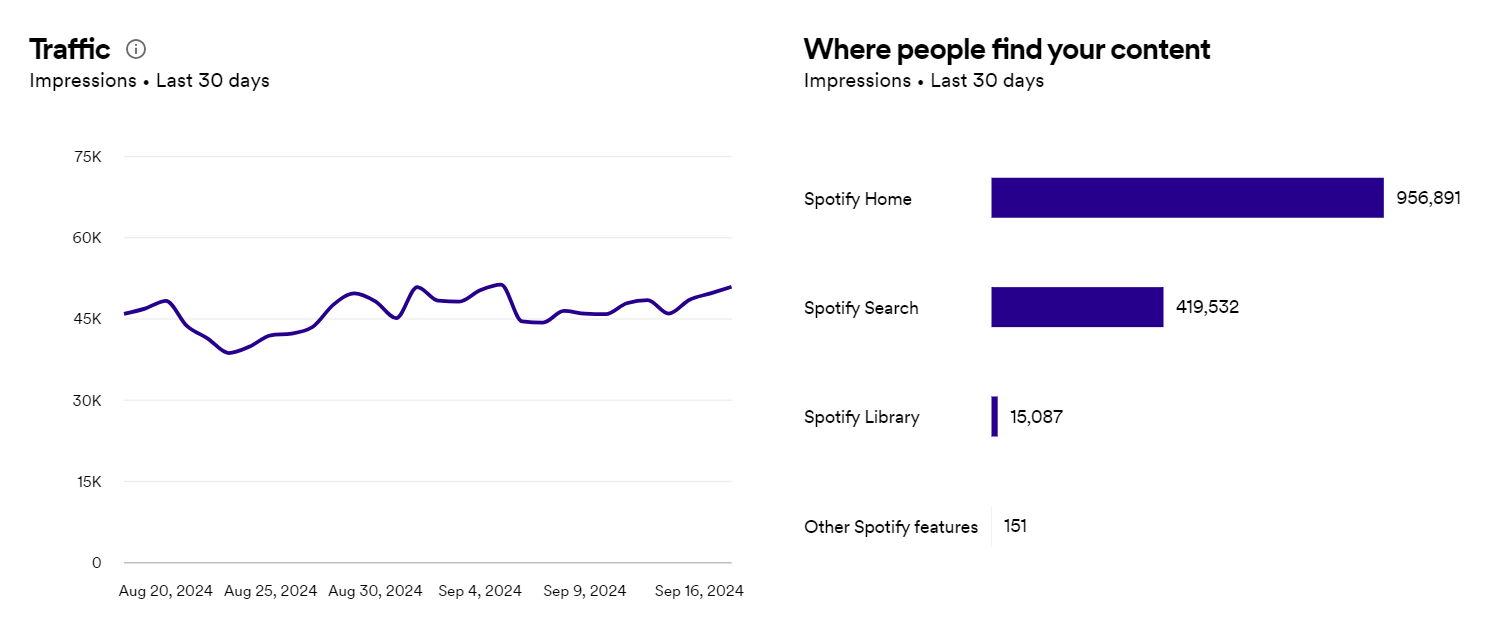
Podcast Visibility Optimization’s first impact: increased Search Impressions
As mentioned above, the goal of Podcast Visibility Optimization (PVO) is to increase the visibility of a podcast on audio platforms’ internal search results.
The core objective of PVO is not just to rank highly for search queries but to ensure potential listeners are discovering your podcast. After all, there’s no point in having top-ranking positions if the podcast isn’t being shown to a significant number of users on platforms like Spotify.
If a podcast has a high ranking on several keywords but a low number of impressions, it likely means the search terms it’s optimized for have a low search volume. This would not translate to valuable discoverability and discovery for the podcast.
So, with PVO, it’s crucial to track Search Impressions. As outlined in our previous article, Spotify Impression Data: What It Means and How to Use It, the “search impressions” metric in Spotify analytics represents the number of times your podcast appeared in users’ search results
This helps gauge the podcast’s overall visibility and relevance within the platform’s search results. To date, only the Spotify for Podcasters dashboard provides this impression data, allowing podcasters to monitor the impact of their optimization efforts.
Spotify’s search impression metrics are a relatively new feature. Currently, Spotify provides data in a rolling 30-day format without options to export or view historical data. To track progress, you’ll need to regularly record these metrics manually. Although time-consuming, this helps gauge which PVO tactics are working and refine your strategy.
Podcast Visibility Optimization’s second impact: increased downloads
Like every online marketing funnel, more impressions translate directly into more downloads. Spotify for Creators (formerly Spotify for Podcasters) provides a clear visualization of your podcasts’ funnel.

On your dashboard, you will find two conversion rates:
- People you reached to People who showed interest. We like to call it “seen to clicked”.
- People who showed interest to People who streamed. We like to call it “clicked to downloaded”.
So, by simply applying the conversion rates to your increase in search impressions, you can estimate the number of extra downloads you won by improving your show’s visibility.
Here is an example:
Before Podcast Visibility Optimization:
- Search Impressions: 500,000
- “Seen to Clicked” Conversion Rate: 10%
- “Clicked to Downloaded” Conversion Rate: 80%
- Total Downloads: 500,000 x 10% x 80% = 40,000
After Podcast Visibility Optimization:
- Search Impressions: 700,000
- “Seen to Clicked” Conversion Rate: 10%
- “Clicked to Downloaded” Conversion Rate: 80%
- Total Downloads: 700,000 x 10% x 80% = 56,000
The difference in downloads is the impact of your PVO efforts: 56,000 – 40,000 = 16,000
In the example above, we have used 10% and 80% conversion rates, as many podcasts fluctuate around those numbers. However, conversion rates can vary greatly depending on your podcast’s topic, branding, and the specific search terms you are targeting, so please use yours.
Podcast Visibility Optimization + Podcast Cover Optimization = the winning combo
While Podcast Visibility Optimization (PVO) is crucial for improving a podcast’s discoverability, optimizing another key element—the podcast cover art—is equally important.
Podcast Cover Optimization (PCO) focuses on enhancing the visual representation of your show to maximize the “seen to clicked” conversion rate. Your podcast may rank high in search results, but potential listeners may not click on it if the cover art doesn’t attract attention. Testing and optimizing cover art boosts the ‘seen to clicked’ rate, creating a strong synergy when combined with PVO strategies.
As outlined in our previous article on Podcast Cover Optimization, testing and optimizing your cover art is essential for boosting the “seen to clicked” conversion rate. This, combined with the impression-driving power of PVO, creates the winning combination to take your podcast’s performance to new heights.
By aligning your PVO and PCO tactics, you create a synergistic effect that amplifies the impact of each strategy. Potential listeners are more likely to discover your podcast through improved search visibility and more compelled to click and check out your content due to its visually appealing and professional presentation.
Implementing this PVO + PCO approach allows you to maximize your podcast’s discoverability and conversion potential, ultimately leading to more downloads.
Flaws to the model
It is important to note that while allowing a quick estimation of your PVO efforts, the model has a few limitations:
- Keep in mind that this model relies only on Spotify data. You may need to extrapolate based on Spotify’s share of your total downloads to gauge impact across all platforms (like Apple Podcasts or Amazon Music). For example, if Spotify represents 50% of your downloads, you could multiply the extra downloads by two for an overall estimate.
- The conversion rates are broad averages, including Search, Home, and Library impressions. The conversion rates for search are likely different than the average of all impressions. Furthermore, the “seen to clicked” and “clicked to downloaded” rates may be higher or lower if you rank on branded versus generic search terms.
Conclusion
Podcast Visibility Optimization (PVO) is a powerful strategy for driving more listeners to your show. You can significantly increase your podcast’s discoverability and conversion potential by improving its rankings and visibility on major audio platforms.
While the PVO impact calculation provides a practical way to estimate the download benefits, the model has limitations, such as the need to extrapolate beyond Spotify data. However, the core premise remains true—improving your podcast’s visibility through PVO will directly translate into more impressions, clicks, and downloads.
Combining these PVO gains with optimized podcast cover art through a comprehensive PCO strategy will unlock an even more powerful one-two punch for podcast growth. By embracing PVO and PCO as complementary pillars of your marketing approach, you can maximize your show’s discoverability, conversion rates, and audience size.
The podcast landscape is crowded, but with the proper visibility optimization strategies, you can ensure your show rises to the top and reaches the listeners it deserves.

